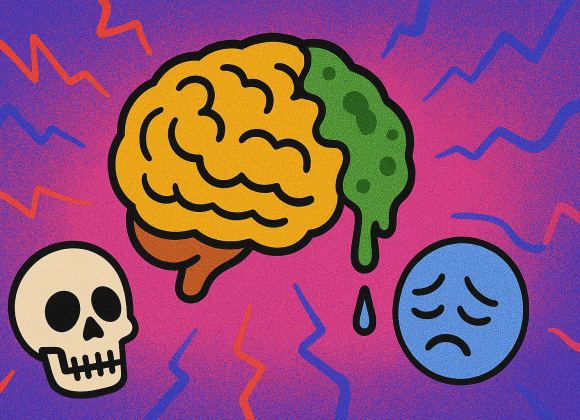Rejection Sensitivity Dysphoria (RSD) is an intense emotional condition in which individuals experience extreme pain in response to perceived or actual rejection, criticism, or failure. Even minor setbacks or neutral feedback can trigger overwhelming feelings of shame, humiliation, anger, or sadness. While RSD is not currently recognized as a standalone diagnosis in the Diagnostic and Statistical Manual of Mental Disorders (DSM-5), it is increasingly acknowledged as a common and debilitating symptom, particularly in individuals with ADHD—especially those with the inattentive or combined subtype. It has also been observed in people with mood disorders or those who have experienced early emotional trauma.
Individuals living with RSD often misinterpret neutral interactions as negative or rejecting, leading them to avoid situations where they might be judged. This can result in a tendency to become overly people-pleasing in an effort to avoid disapproval or, conversely, to withdraw entirely from social engagement. Even minor criticism can lead to emotional outbursts or internal breakdowns, making daily interactions feel exhausting and emotionally charged.
How Common Is RSD?
Because RSD is not formally classified as a clinical diagnosis, exact prevalence data is limited; however, several studies and expert opinions suggest strong trends. According to Dr. William Dodson, a leading psychiatrist specializing in ADHD, up to 99% of individuals with ADHD report experiencing some form of rejection sensitivity. Among them, approximately 30% to 50% may endure severe RSD symptoms that significantly disrupt their relationships, academic performance, and emotional stability. Interestingly, females with ADHD tend to report RSD more frequently than males, possibly due to heightened social pressures and differences in emotional expression.
Although most discussions about RSD focus on its connection with ADHD, it also affects individuals without ADHD. People with Borderline Personality Disorder (BPD), Autism Spectrum Disorder (ASD), Complex PTSD, or highly sensitive personality traits often experience similar symptoms. Because RSD mimics the symptoms of bipolar disorder, social anxiety, and other mood disorders, clinicians frequently misdiagnose it. Therefore, increasing awareness and understanding of RSD plays a crucial role in helping individuals receive accurate support and effective treatment.
Here are five effective ways to cope with RSD and reclaim control over your emotional well-being:
1. Name It to Tame It: Recognize the RSD Response
One of the most powerful steps in managing Rejection Sensitivity Dysphoria is simply learning to recognize when it’s happening. The emotional reactions triggered by RSD can feel so immediate and overwhelming that they seem like absolute truth—but often, they’re not. By identifying the patterns of RSD as they occur, you begin to create a healthy distance between yourself and your emotions.
When you notice a surge of shame, anger, or anxiety in response to a perceived slight—like a delayed reply, critical comment, or even a neutral tone of voice—pause and ask yourself: “Is this real rejection, or does it just feel like it?” This small moment of reflection can interrupt the automatic emotional spiral and allow you to respond more thoughtfully rather than react impulsively.
Naming the emotion (“This is RSD showing up”) helps you externalize it. You’re not the problem—it’s the reaction pattern that’s flaring up. Over time, this practice builds emotional awareness and resilience, empowering you to take back control from RSD’s grip.
2. Practice Emotional Regulation Techniques
Rejection Sensitivity Dysphoria often causes emotions to flare up with surprising intensity and speed. In these moments, practicing emotional regulation is essential to prevent the emotional wave from overwhelming you. Emotional regulation doesn’t mean suppressing your feelings—it means learning to manage them in healthy, grounding ways.
One effective method is deep breathing, particularly techniques like box breathing (inhaling for 4 counts, holding for 4, exhaling for 4, and holding again for 4). This calms the nervous system and helps you pause before reacting. Progressive muscle relaxation, where you tense and release different muscle groups, can also redirect your focus from emotional distress to physical awareness.
Another powerful tool is grounding, such as the 5-4-3-2-1 technique: name five things you can see, four you can touch, three you can hear, two you can smell, and one you can taste. These sensory strategies help bring you back to the present moment when your thoughts start spiraling.
Physical movement is also helpful—whether it’s taking a short walk, stretching, or holding something cold like an ice cube. These small actions signal safety to the brain and help reduce the urgency of the emotional response. With consistent use, these techniques create space between the feeling and the reaction, allowing you to respond with intention instead of impulse.
3. Use Cognitive Reframing
One of the most effective tools for managing Rejection Sensitivity Dysphoria is cognitive reframing—the practice of consciously shifting the way you interpret situations. RSD often leads to distorted thinking, where neutral or ambiguous events are viewed through a lens of rejection or failure. Cognitive reframing helps you challenge those automatic thoughts and replace them with more balanced, compassionate perspectives.
For example, if someone doesn’t respond to your message right away, your RSD might interpret it as, “They’re ignoring me because I did something wrong.” Reframing this thought could sound like, “They’re probably busy, and it doesn’t mean anything about me personally.” This doesn’t mean denying your emotions—it means questioning the story your brain is telling you and creating room for alternative explanations.
You can start by identifying “trigger thoughts” that consistently lead to distress. Then ask yourself: Is this thought based on facts or assumptions? Is there another way to look at this situation? Over time, this practice helps train your mind to pause, assess, and respond more rationally instead of reacting with emotional intensity.
Cognitive reframing doesn’t eliminate RSD, but it softens its impact. It gives you the ability to rewrite the narrative in your head—from one of rejection and worthlessness to one of resilience and self-compassion.
4. Set Boundaries and Communicate Clearly
Rejection Sensitivity Dysphoria can make you hyper-aware of others’ opinions, often leading to people-pleasing behaviors or emotional withdrawal to avoid any chance of disapproval. But one of the most empowering ways to manage RSD is by learning to set healthy boundaries and communicate openly—both with others and yourself.
Setting boundaries doesn’t mean being harsh or distant—it means protecting your emotional well-being. When you’re constantly trying to avoid rejection, you may say “yes” to things that drain you or tolerate behavior that hurts you, just to avoid conflict. Over time, this erodes your self-worth. Instead, start practicing simple, respectful boundaries like saying, “I need some time to think about that,” or “I’m not comfortable with that right now.” These statements affirm your needs without being confrontational.
Clear communication is equally important. If something bothers you or triggers an RSD response, try expressing it directly rather than assuming the worst. For example, instead of internalizing silence as a sign that someone is upset with you, you might say, “I noticed you’ve been quiet—did I say something wrong, or are you just having a busy day?” This opens the door to clarity rather than emotional guessing.
By setting boundaries and communicating with honesty and kindness, you create safer, more stable relationships—both with others and yourself. And in doing so, you reduce the emotional chaos that RSD can bring.
5. Consider Therapy or Coaching
Managing Rejection Sensitivity Dysphoria on your own can feel overwhelming, especially when the emotional reactions are intense and seem uncontrollable. That’s why seeking professional support through therapy or coaching can be a game-changer in your journey toward emotional balance.
A licensed therapist—particularly one familiar with ADHD, trauma, or emotion-focused therapy—can help you identify the root causes of your sensitivity, work through patterns of self-doubt, and build healthier coping mechanisms. Techniques such as Cognitive Behavioral Therapy (CBT) and Dialectical Behavior Therapy (DBT) have been shown to be especially helpful for individuals dealing with emotional dysregulation and distorted thinking linked to RSD.
In addition to therapy, ADHD coaching or emotional wellness coaching can provide practical, goal-oriented strategies for managing triggers in everyday life. Coaches can help you improve self-awareness, develop emotional boundaries, and build communication skills—all tailored to your personal challenges with RSD.
Perhaps most importantly, therapy or coaching offers a safe, nonjudgmental space to process feelings that may have been dismissed or misunderstood for years. You don’t have to navigate this alone—support is available, and it can make a profound difference in how you view yourself and relate to others.
Final Thoughts
Living with Rejection Sensitivity Dysphoria can feel like walking through life on emotional eggshells—where even small interactions can leave deep emotional marks. But while RSD can be incredibly challenging, it is not a life sentence. With self-awareness, the right coping strategies, and supportive guidance, it is absolutely possible to regain emotional stability and build stronger, more resilient relationships.
You are not “too sensitive” or “overreacting”—you are experiencing something very real that deserves understanding, compassion, and care. Learning to manage RSD is not about silencing your emotions, but rather about understanding them, honoring your needs, and creating a healthier inner dialogue. Step by step, you can move from feeling controlled by rejection to responding with clarity, confidence, and self-respect.
Remember, you’re not alone—and healing begins with small, consistent steps toward self-awareness and support.




